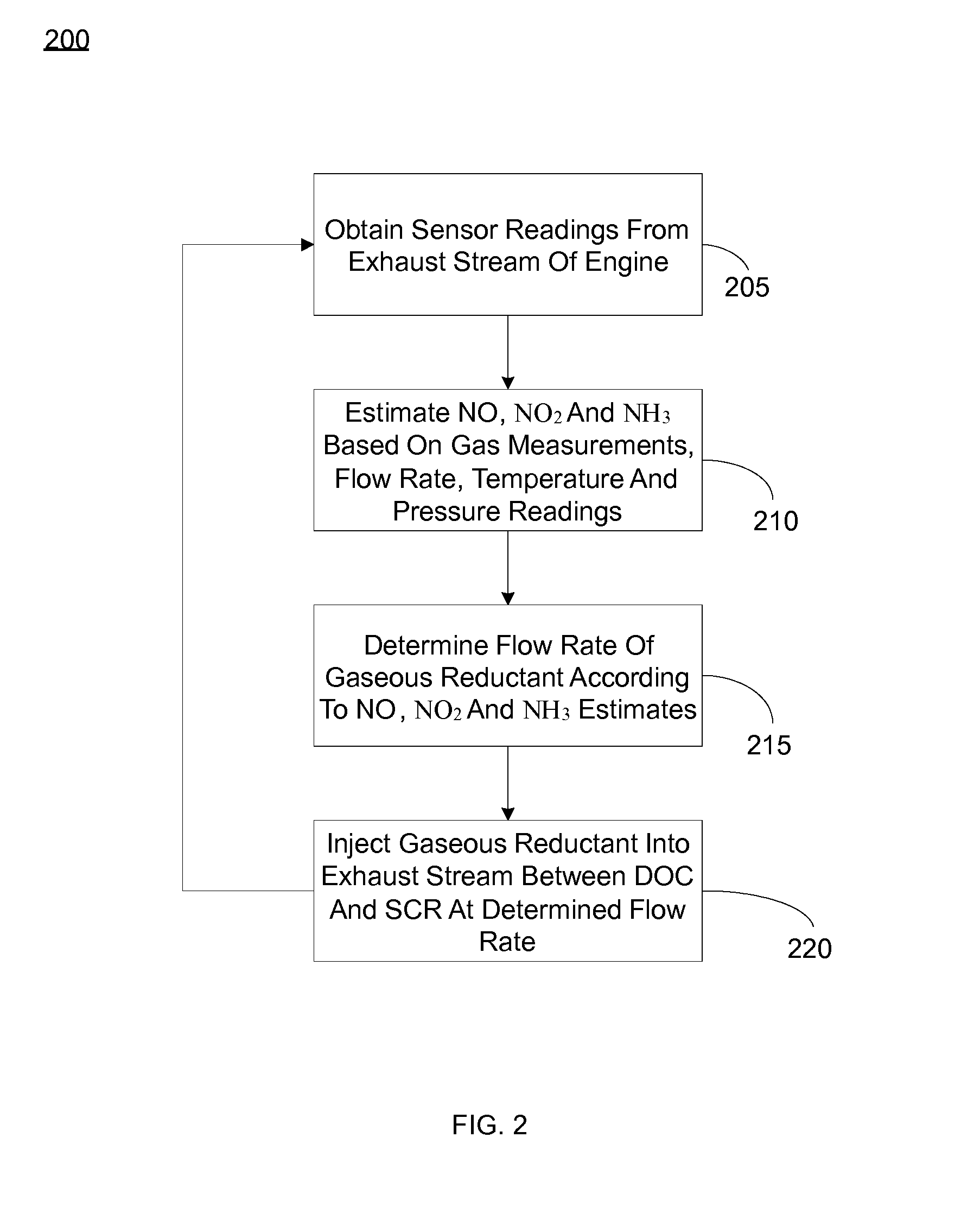Gaseous reductant injection control system
a technology of reductant and control system, which is applied in the direction of machines/engines, engine components, mechanical equipment, etc., can solve the problems of increased nhsub>3 and nosub>x/sub> of lean-burn engines
- Summary
- Abstract
- Description
- Claims
- Application Information
AI Technical Summary
Benefits of technology
Problems solved by technology
Method used
Image
Examples
Embodiment Construction
[0007]Various embodiments of the present invention are directed to estimating nitric oxide (NO), nitride dioxide (NO2) and ammonia (NH3) in exhaust gas generated from an engine such as a lean-burn engine in order to perform an aftertreatment on the exhaust such that nitrogen oxide (NOx) and NH3 emissions are reduced. In one embodiment, an exhaust stream generated from an engine is applied to an oxidation catalyst (OC) and a selective catalytic reduction (SCR) catalyst. A gaseous reductant injector injects a gaseous reductant into the exhaust stream between the OC and the SCR catalyst. Gas sensors located upstream of the OC and downstream of the SCR catalyst obtain measurements of the concentration of a gas in the exhaust stream. A controller, containing an estimator having models of the OC and the SCR catalyst, receives the gas concentration measurements along with other operating conditions out of the engine. In one embodiment, the estimator can estimate concentrations of NO and NO...
PUM
 Login to View More
Login to View More Abstract
Description
Claims
Application Information
 Login to View More
Login to View More - R&D
- Intellectual Property
- Life Sciences
- Materials
- Tech Scout
- Unparalleled Data Quality
- Higher Quality Content
- 60% Fewer Hallucinations
Browse by: Latest US Patents, China's latest patents, Technical Efficacy Thesaurus, Application Domain, Technology Topic, Popular Technical Reports.
© 2025 PatSnap. All rights reserved.Legal|Privacy policy|Modern Slavery Act Transparency Statement|Sitemap|About US| Contact US: help@patsnap.com



